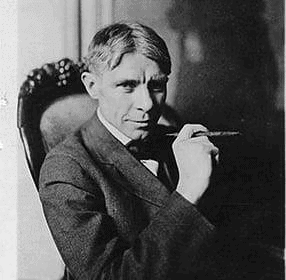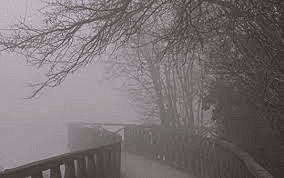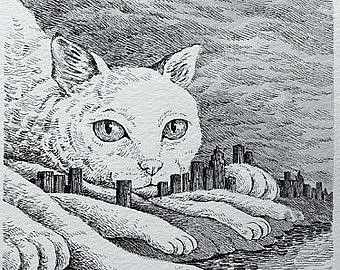Fog Summary Class 10 English First Flight Chapter 8
| Table of contents |

|
| About the Poet |

|
| Key Points of the Poem |

|
| Detailed Summary |

|
| Theme/Message |

|
| Literary Devices |

|
| Difficult Meanings |

|
About the Poet
Carl Sandburg (1878 – 1967) was an American author recognised for his poetry, journalism, and biographies. He was born into a poor family in Galesburg, Illinois, and won three Pulitzer Prizes: two for his poetry and one for his biography of Abraham Lincoln. His well-known works include "The War Years" (a four-volume set), "Chicago", "Remembrance Rock", and "Abraham Lincoln." Sandburg preferred free verse in his poetry.

Key Points of the Poem
- In the poem "Fog," Carl Sandburg compares fog to a kitten, showing how both appear slowly and quietly. Just like you may not see a kitten until it’s right there, fog comes in gently, often surprising people.
- It wraps around the area, creating challenges but not being aware of its impact. Even though it causes troubles and incidents, fog eventually clears away, allowing clarity as issues get resolved over time.
Detailed Summary
The fog comes
on little cat feet.
It sits looking
over harbour and city
on silent haunches
and then moves on.

The poet vividly describes the arrival and departure of fog, likening it to the quiet and stealthy movements of a cat. Initially, the fog slowly advances towards the city and the harbour, mirroring the deliberate and unhurried manner in which a cat approaches its surroundings. This comparison highlights the unpredictable nature of fog, as it can envelop an area without warning, much like a cat sneaking into a home unnoticed.
Once the fog settles over the city and harbour, the poet portrays it as sitting silently, akin to a cat quietly observing its surroundings. This imagery evokes a sense of stillness and calmness as the fog blankets the landscape, much like how a cat calmly sits, its legs folded, while taking in its surroundings. This comparison emphasizes the peaceful yet pervasive presence of fog as it envelops the city and harbour in its embrace.
Furthermore, the poet notes that, like a cat, the fog eventually departs from the city and moves on. This departure is described as silent and unnoticed, echoing the subtle way in which a cat may leave a room without drawing attention. The comparison underscores the transient nature of fog, as it dissipates and fades away, leaving behind a sense of mystery and intrigue. Overall, the poet skillfully uses the analogy of a cat to convey the atmospheric qualities and movements of fog, creating a vivid and evocative portrayal of this natural phenomenon.

Theme/Message
Theme
- The central theme of the poem is the constant subtle inevitable changes in life. Sometimes our lives are covered with dense fog and everything seems unclear. Then suddenly the fog lifts and things are normal again.
Message
- The poem compares fog to a cat's movement to suggest that one should keep progressing in life regardless of obstacles.
Literary Devices
- Metaphor– (Indirect comparison)
On little cat feet – the fog has been compared with a cat - Personification – (Giving characteristics of humans to animals or inanimate objects)
The fog comes, It sits looking – fog has been given characteristics of humans - Enjambment – a sentence continuing in the next line without punctuation
It sits looking … and then moves on. – the last four lines form a single sentence - Transferred epithet- ( When an adjective is used to describe a noun but it actually refers to another noun)
On silent haunches – it is the fog, and not the haunches that is silent - Imagery – (when an image is created through words)
Visual imagery – It sits looking/ over harbour and city
Kinaesthetic imagery – The fog comes… and then moves on.
Difficult Meanings
- harbour: port, the place where ships load and unload
- haunches: hips
- on haunches: sitting with knees bent
- fog: a thick cloud of minuscule water droplets near the earth’s surface.
|
61 videos|617 docs|69 tests
|
FAQs on Fog Summary Class 10 English First Flight Chapter 8
| 1. Who is the poet of the poem "Fog"? |  |
| 2. What is the central theme of the poem "Fog"? |  |
| 3. What literary devices are used in the poem "Fog"? |  |
| 4. Can you provide a detailed summary of the poem "Fog"? |  |
| 5. What message does the poet convey through "Fog"? |  |
















